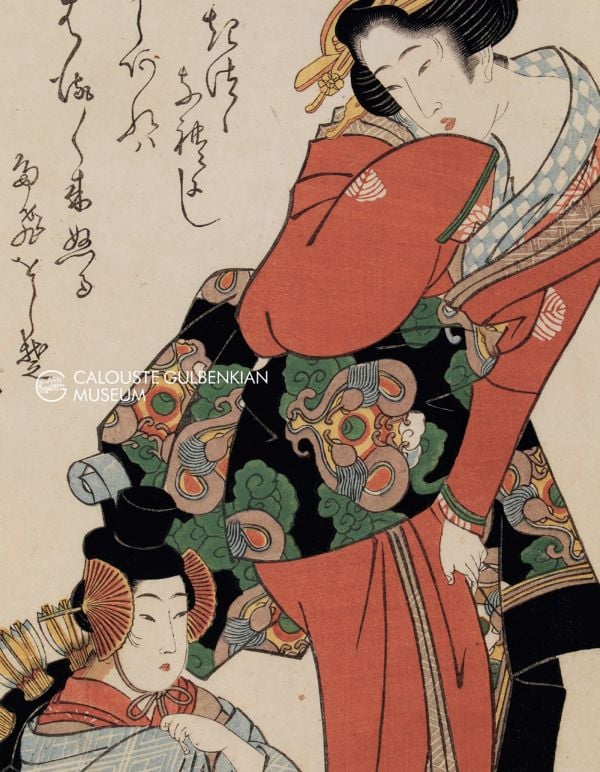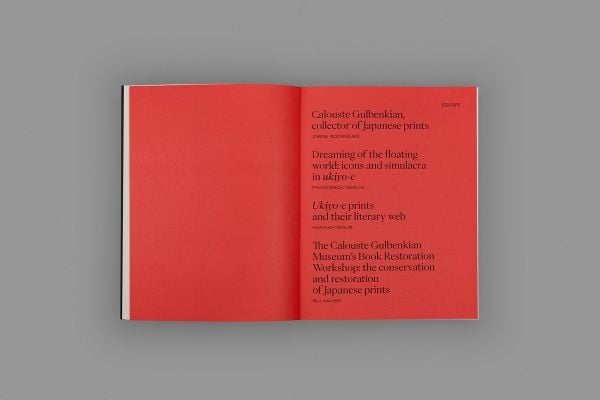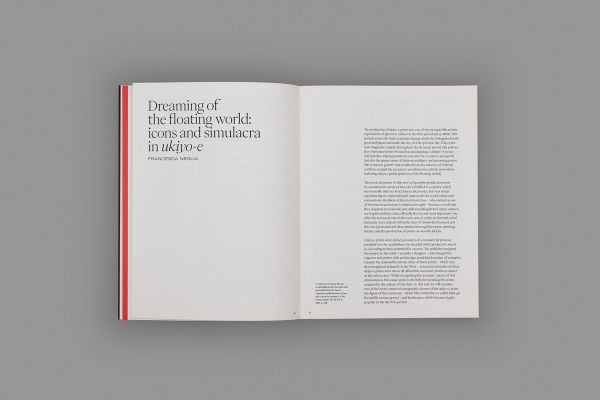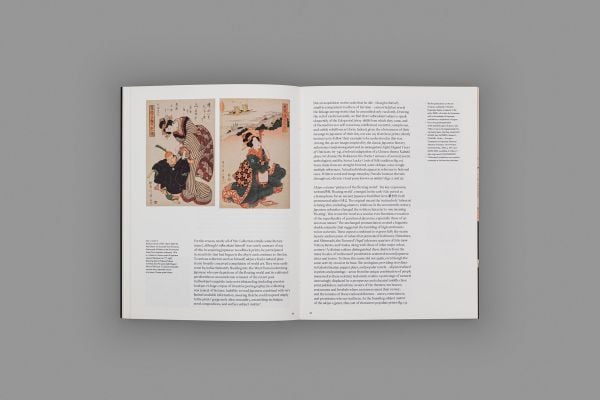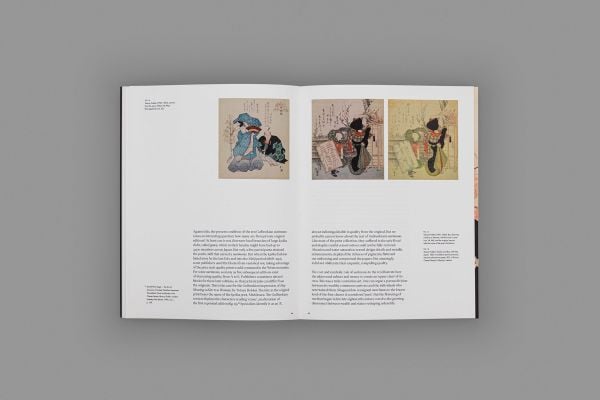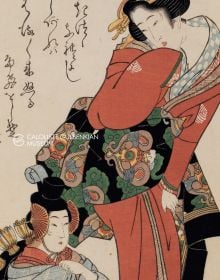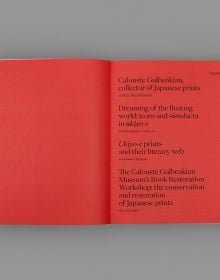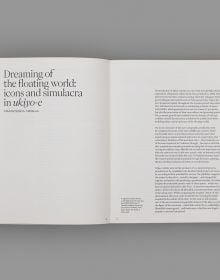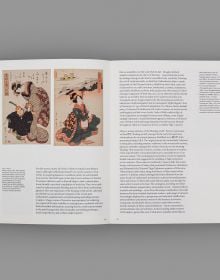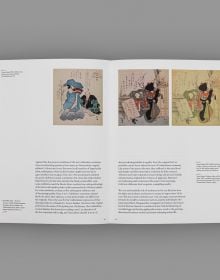Floating world: 'ukiyo-e' Japanese Prints
- Almost one hundred Japanese prints from the Edo Period amassed by Calouste Gulbenkian, available for the first time in book form
- By exploring the culture of the city of Edo, now Tokyo, we can grasp the city’s vision of itself, including contemplation of the natural world and the beauty of the courtesans. This culture is defined through representation of the urban layout of the city, its iconic places – including the Yoshiwara quarter – its streets and surrounding landscape
- Featuring many previously unseen Japanese Prints from the Calouste Gulbenkian Museum
- Awarded with the APOM award for the best exhibition catalogue in 2023
Calouste Gulbenkian amassed a remarkable collection of Japanese art. This lesser known facet of the collector’s activity was explored in the exhibition Floating world: ‘ukiyo-e’ Japanese prints, which presented a large number of Japanese prints produced between the 17th and 19th centuries that belong entirely to the Museum’s collection. The exhibition focused on the concept of ukiyo, which means ‘floating world’ and refers to the fleeting pleasures of everyday life.
The catalogue is divided into two parts. The first is a set of four essays, including three by the exhibition curators. In the first text, Jorge Rodrigues explores the set of prints acquired by Calouste Gulbenkian for his collection. Francesca Neglia then looks at two of the most popular iconographic themes in ukiyo-e: the figure of the courtesan and landscapes. In the third essay, Hannah Sigur discusses the literary network associated with ukiyo-e. Finally, Rui Xavier, Preventive Conservation Coordinator at the Gulbenkian Museum and curator of the Gulbenkian Collection’s lacquerware, writes about the damage sustained by the collection of Japanese prints after the 1967 Lisbon’s floods and the remarkable restoration process that followed.
The second part of the publication is similar in structure to the accompanying exhibition sections and includes texts on specific works or groups of works. The first chapter, ‘Different views of nature and landscape’, deals with landscape painting as an autonomous genre of ukiyo-e; in ‘Uki-e’: perspective images, the focus is on uki-e, a genre of prints made by adopting Western geometric perspective; Yoshiwara’s ‘floating world’ revolves around the authorised leisure district of Edo (present-day Tokyo) and its influence on the production of prints depicting women; ‘Ukiyo-e’s literary web’ deals with the unique and contradictory relationship between scholarly literature and poetry and the main protagonists in the ‘floating world’, such as kabuki theatre actors and the so-called ‘women for play’; finally, ‘The Tōkaidō Stations’ covers the famous print series of the same name, comprising prints on various themes related to the Tōkaidō route, which ran from Edo to the imperial city of Kyoto.
Image Credits: Panorama
- Publisher
- Calouste Gulbenkian Foundation
- ISBN
- 9789899119147
- Published
- 20th Oct 2025
- Binding
- Paperback / softback
- Territory
- World
- Size
- 260 mm x 200 mm
- Pages
- 208 Pages
- Illustrations
- 140 color, 4 b&w
Distributed by ACC Art Books
Our Catalogues
Please log-in or create an account to see your recent items.
